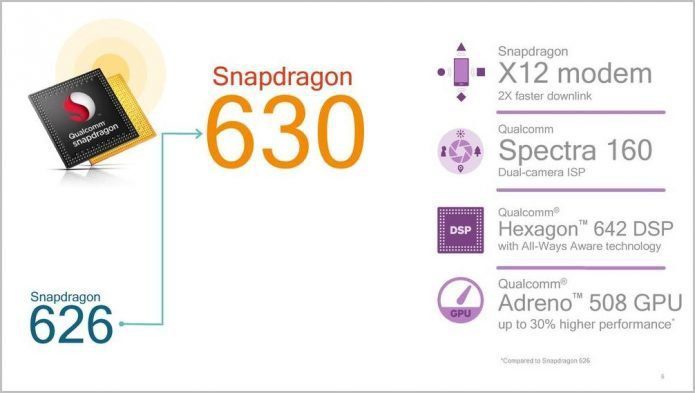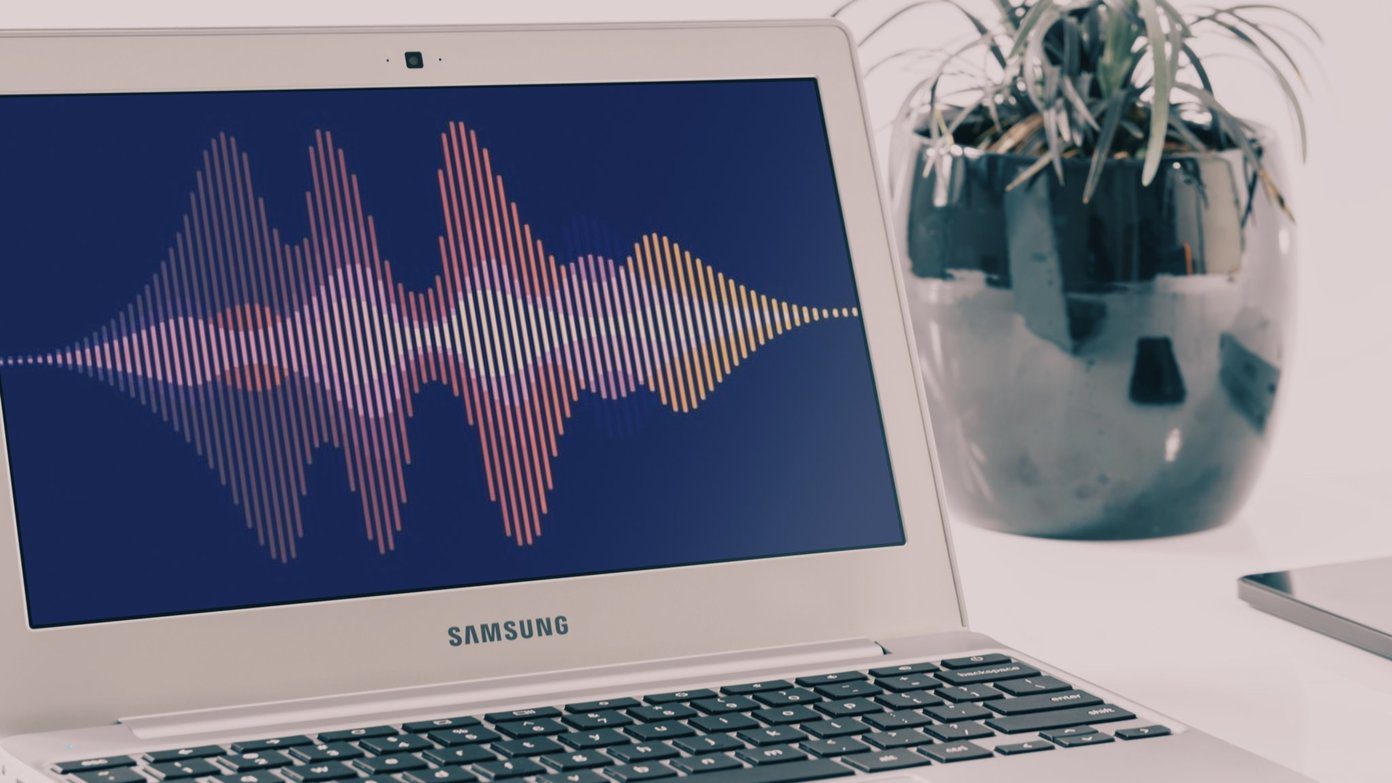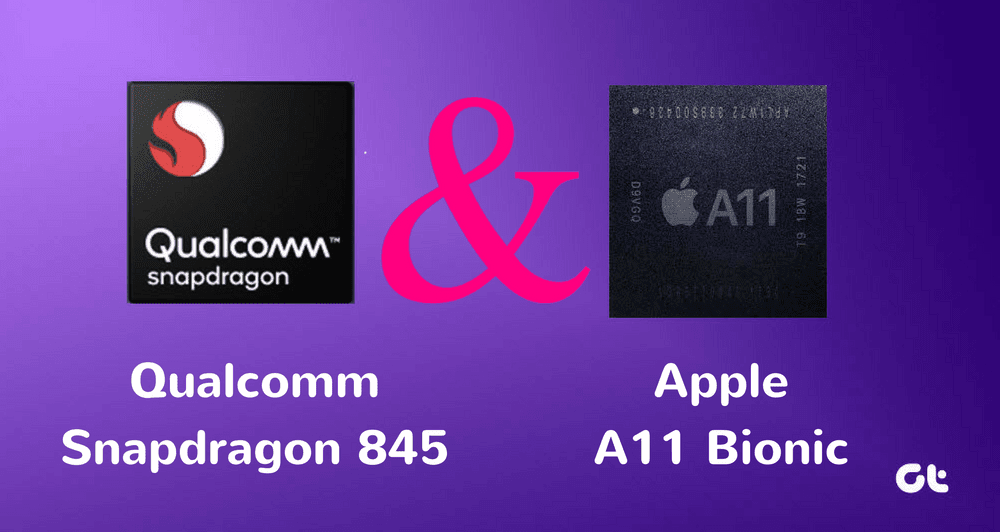The Snapdragon 625 has been a great processor both in terms of efficiency and power management. The best thing about the processor is that in spite of its midrange tag, it can handle anything you throw at it. However, the question that remains to be answered is how much of an upgrade does the new Qualcomm Snapdragon 636 bring to the table. Or is it just a minor upgrade repackaged in a shiny new avatar? Well, let’s find out!
Specifications That Matter
Snapdragon 625 and 636: A Brief Overview
The Qualcomm Snapdragon 636 is the successor to the popular Snapdragon Snapdragon 630. This new processor has 40% higher performance when compared to the 630. Plus it’s considered one of the most powerful chipsets in Qualcomm’s 600-series.
Performance Improvements
With the Snapdragon 625 embracing Samsung’s 14nm LPP FinFET process, it brought better power management and improved performance. When it comes to the CPU, it has two quad-core clusters of 64-bit ARM Cortex A53s that clock at a higher frequency of 2GHz. Unlike its predecessor, the Snapdragon 625 doesn’t have a dedicated performance cluster to take care of the heavy stuff. Instead, the 8 Cortex A53s takes care of all the real-world situations like handling multiple apps and intensive gaming gracefully. The CPU structure is slightly different in the new the Snapdragon 636. The Cortex A53 cores have been replaced by high-performing Kryo 260 cores. These Kryo 260 cores use a cluster of four 64-bit ARM semi-custom Cortex-A73 ‘performance’ cores clocked at 2.2GHz and four Cortex-A53 ‘efficiency’ cores clocked at 1.7GHz. The eight Kryo cores are responsible for improved task-sharing capabilities and low latency, and that’s where it outperforms the Snapdragon 625. On the GPU department, the Snapdraon 625 houses an Adreno 506 series GPU while the Snapdragon 636 comes with a graphics-friendly Adreno 509 GPU. Qualcomm claims that the Adreno 509 GPU provides 10% better gaming experience than the Adreno 508 GPU. So we can very well calculate the advantage in the case of the older 506 GPU. Despite the Snapdragon 625’s higher clocking frequency, the Kryo 260 cores give the much-needed punch to the CPU power of the Snapdragon 636.
Improvements in the Camera Field
Specs-wise, there are minor improvements in the camera department. Though the single-camera resolution remains same at 24 megapixels, it’s the dual camera setup which has seen a change. However, the integration of the Qualcomm Spectra 160 ISP for active depth mapping in the Snapdragon 636 gives it the much-needed advantage. Depth mapping is used in Portrait mode where the subject stands in focus with the background being blurred. On top of that, the 636 comes equipped with Qualcomm Hexagon 680 DSP which is designed to support higher camera performance. As opposed to it, the 625 comes with Hexagon 546 DSP. One of the main highlights of the Snapdragon 636 is the inclusion of Qualcomm Clear Sight camera features. Cameras with Qualcomm Clear Sight capture more light in low-light conditions, thus reducing noise from pictures.
Charging Speed
Qualcomm Quick Charge is one of the most sought-after features in smartphones these days. The Snapdragon 625, being at least two years old, supports Quick Charge 3.0. This charging technique raises the charging speed by 40% as compared to its predecessor. Being a new processor, the Snapdragon 636 has the support for Qualcomm’s newest charging techniques i.e. Quick Charge 4.0. If the OEM in question were to support this feature, you can get a whopping 5 hours of battery life in under 5 minutes! The specs sound lovely on paper, however, it remains to be seen how many OEMs actually enable this feature on their phones.
How Do the Mobile Platforms Hold Up?
To begin with, the Snapdragon 636 promises a major boost to the performance, thanks to the Kryo cores. Plus, the jump in camera tech is also too significant to be overlooked. Also, if we were to compare the benchmark scores, there is a significant difference between the two. Under ideal conditions, the Xiaomi Redmi Note 5 Pro powered with the Snapdragon 636 scored 112649 points while the older Xiaomi Mi A1 scored around 78328 points on AnTuTu. In a nutshell, we can safely say that the Snapdragon 636 is not merely a repackaged version of the older Snapdragon 625. In fact, it’s one of the newest revolutionary mobile platforms in the budget. Hence, for the gamer (or multitasker) in you, we’d reckon that you go with the former as it is one of the newer mid-range chipsets. The above article may contain affiliate links which help support Guiding Tech. However, it does not affect our editorial integrity. The content remains unbiased and authentic.















